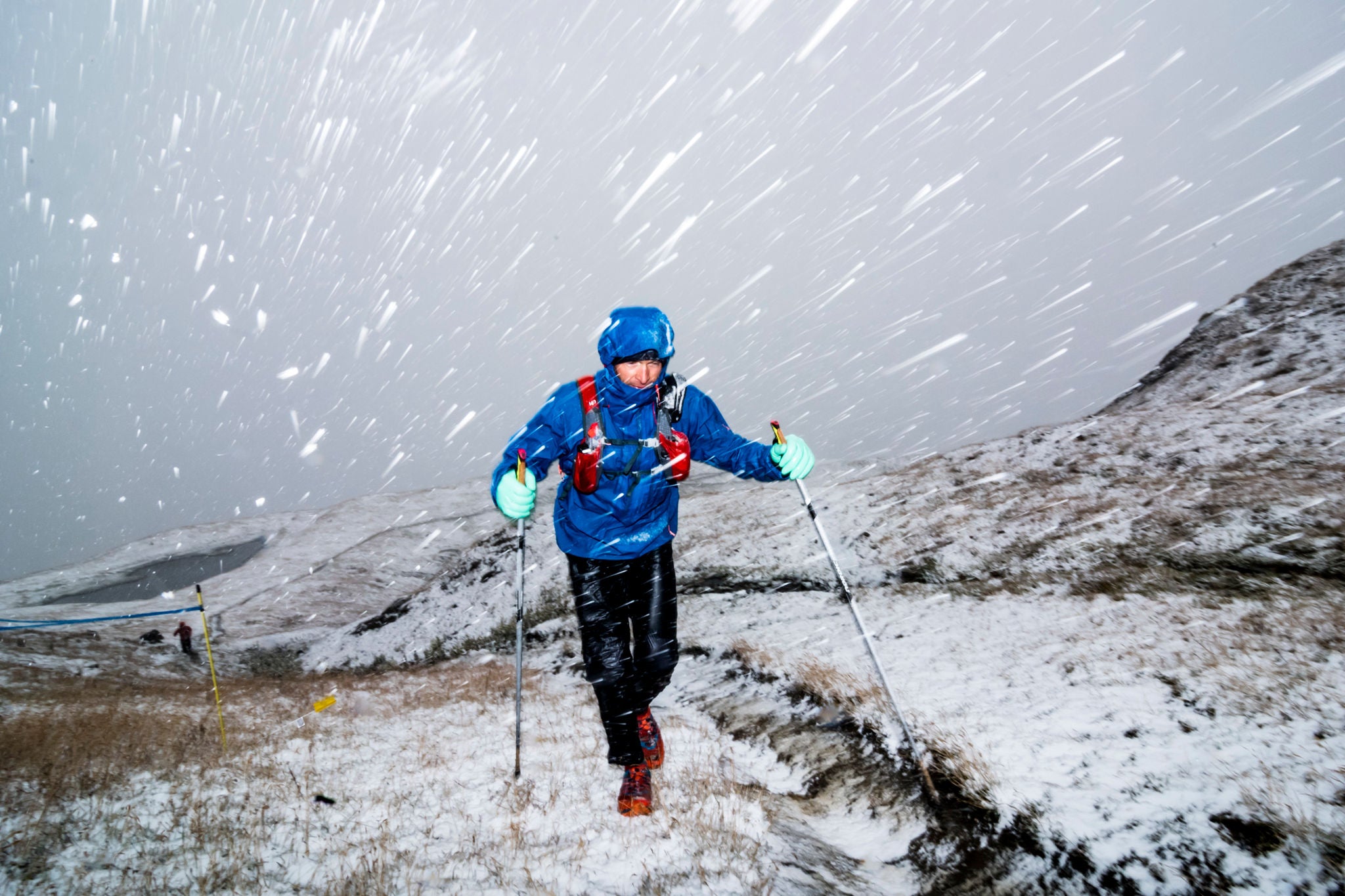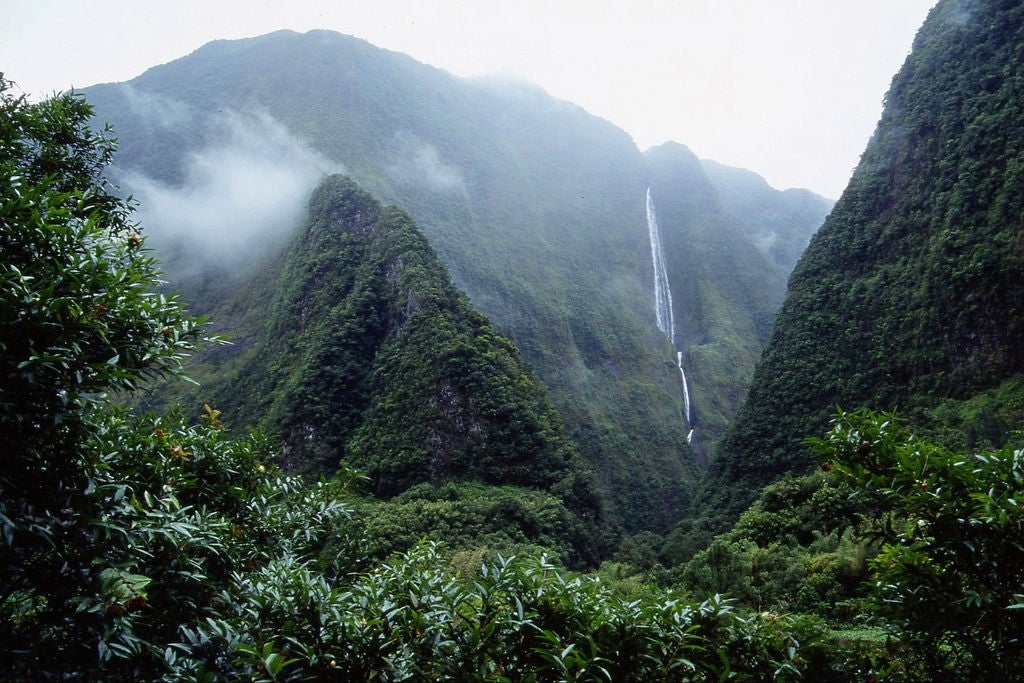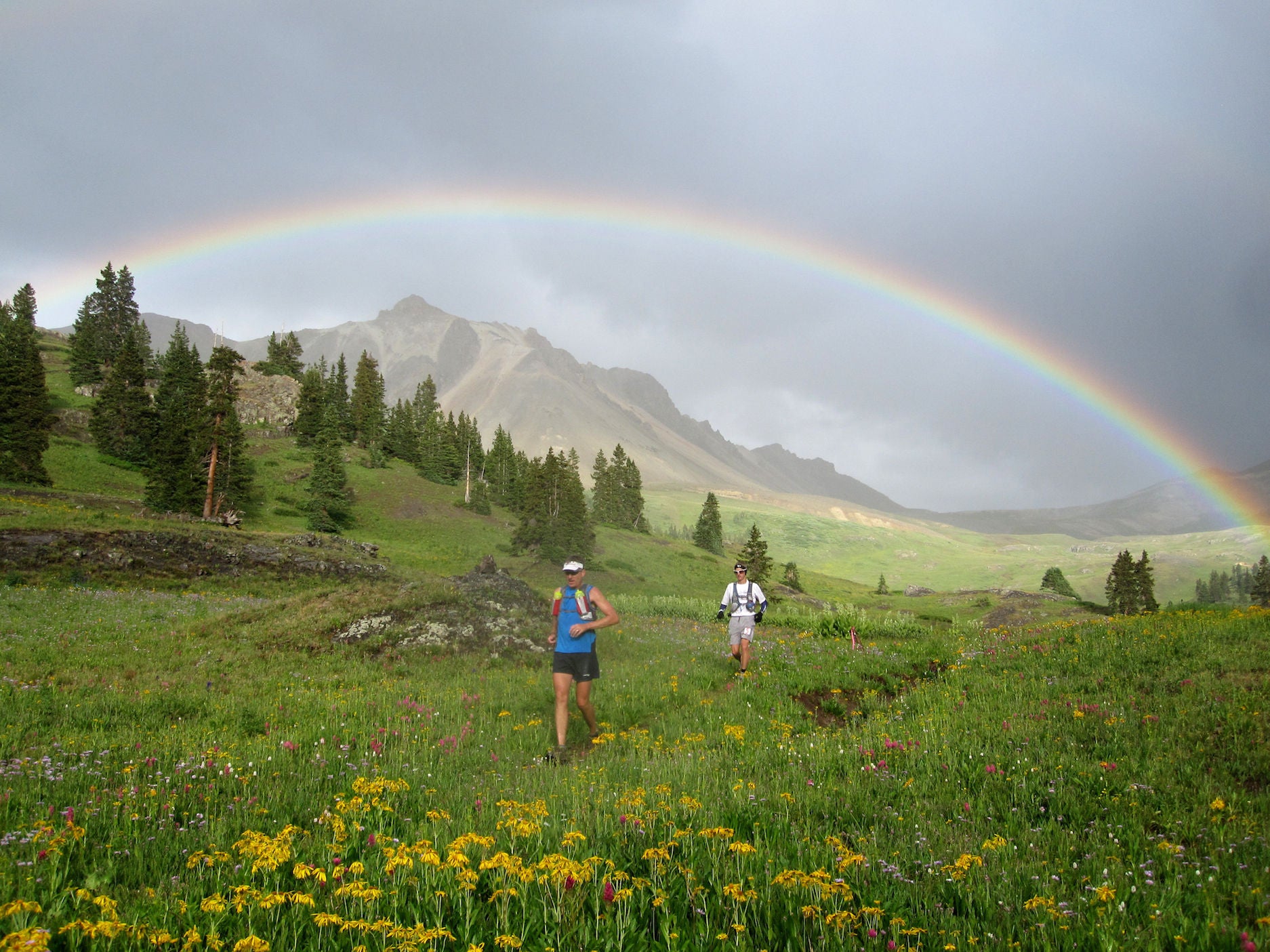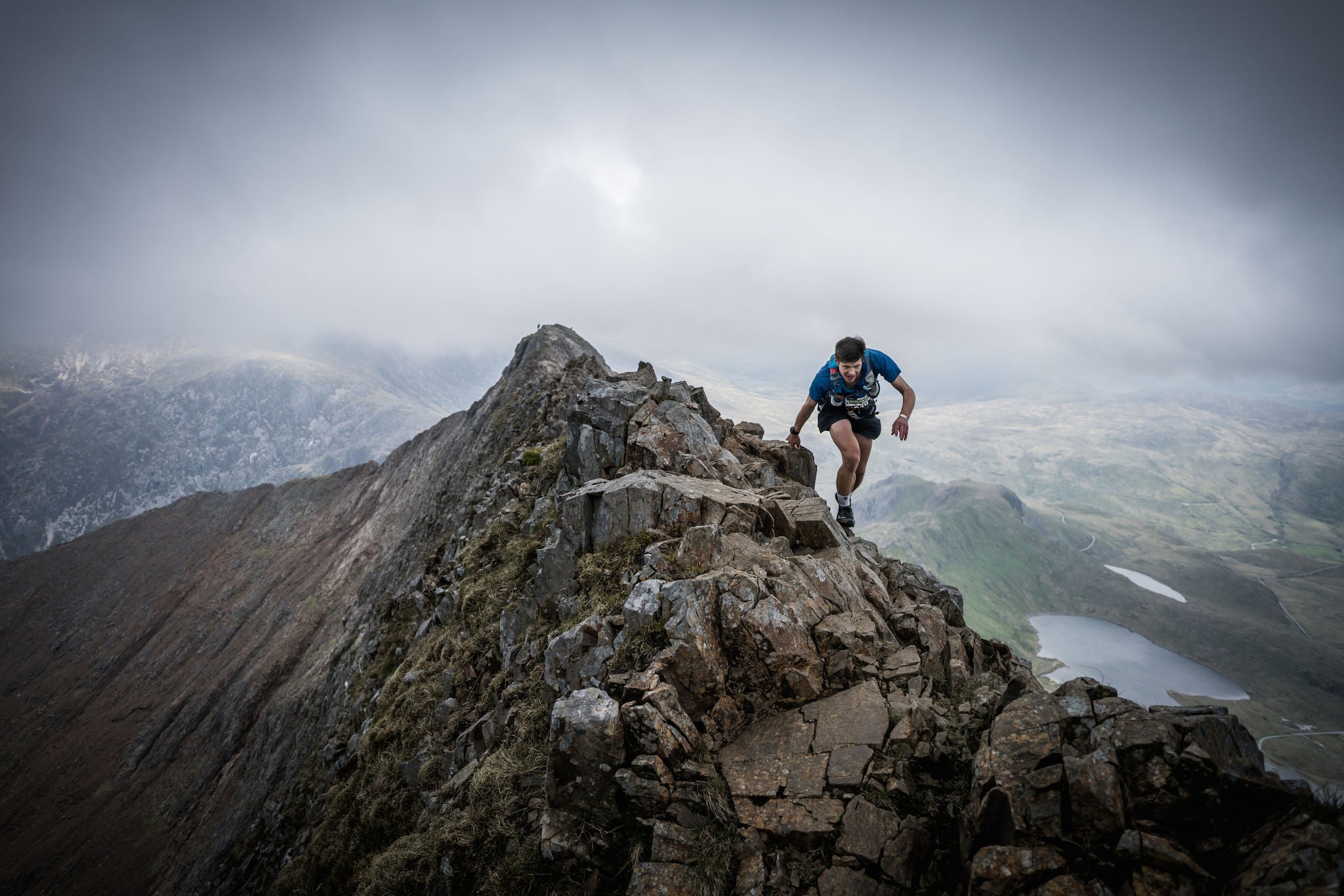
Visit Continental Tires in your country for local vehicle fitment
# Running
The world's ten toughest trail runs
Not exactly what you’d expect from a classic marathon

Simmering volcanos, snow-covered peaks, deserts, jungles, icy rivers, scorpions, snakes, wildcats, thirst, pain and fear are just some of the challenges facing trail runners in the world’s most rugged landscapes.
1. Jungle Marathon (Brazil)
 Not exactly what you’d expect from a classic marathon: Competitors in the Jungle Marathon in Brazil. Photo: Mikkel Beisner / Jungle Marathon
Not exactly what you’d expect from a classic marathon: Competitors in the Jungle Marathon in Brazil. Photo: Mikkel Beisner / Jungle Marathon
The Jungle Marathon takes place in the dense rainforest of Brazil – home to anacondas, jaguars and scorpions. Actually it’s more like survival training than a race and is widely considered the most dangerous trail run in the world. Runners cover over 260 kilometers in six stages through the Amazon rainforest – making their way through almost impenetrable undergrowth, where dangers could be lurking behind every tree. They spend a week struggling through swamps, wading across rivers and coping with temperatures of up to 45°C and extreme humidity, all while carrying provisions and equipment for seven days. The only thing provided at the little checkpoints is water, and the athletes drink up to twelve liters a day. The event takes such a toll on runners that only a few actually reach the finish line in a challenge called Escape from the Jungle. Here’s how they describe it: “After six days of intensive jungle survival training held by our special-forces instructors, you will be dropped into the deep jungle in the dark, with a map, compass and compulsory kit and will have six days to reach the finish line using your skills, your speed and your navigation.” On the way, competitors need to find food and water and build their own shelter for the night.
They spend a week struggling through swamps, wading across rivers and coping with temperatures of up to 45°C and extreme humidity, all while carrying provisions and equipment for seven days.
2. Tor des Géants (Italy)
 Late summer in September? Not at the Tor des Geants in the Italian Alps... Photo: Giacomo Buzio
Late summer in September? Not at the Tor des Geants in the Italian Alps... Photo: Giacomo Buzio
Tor des Géants is the world’s longest nonstop trail race. Competitors have 150 hours in which to cover 330 kilometers, cross 25 mountain passes and master an elevation gain of 24,000 meters. Unlike other trail runs, the organizers have not set any compulsory stages. The only rule is to finish the run in 150 hours. In theory then, the athletes could run the entire distance in one go without stopping. In practice, most run through the first day and night without so much as a minute’s sleep. And even then, many of the runners sleep for only a few hours at one of the seven life bases, where they can also get something to eat. The winner of 2017's race, Javi Dominguez, slept for just 35 minutes in total and set a record with his time of 67 hours, 52 minutes and 15 seconds. “When I crossed the finish line I hated the race,” says Dominguez. “But a few days later I changed my mind and realized what a wonderful experience this race had really been.” Tor des Géants is not just one of the world’s toughest trails, but also one of the most beautiful. It passes through the Aosta Valley in Italy, starting and finishing in the little resort of Courmayeur in the heart of the Italian Alps. From here, the athletes run in the shadow of the highest four-thousanders in the Alps – Mont Blanc, Gran Paradiso, Monte Rosa and the Matterhorn – and on through the Mont Avic natural park. The trail follows narrow dirt tracks and sparse scree slopes, lush green alpine pastures and snow-covered glaciers.
3. Ultra-Trail Du Mont Blanc (France / Italy / Switzerland)
The Ultra-Trail du Mont Blanc involves a distance of 170 kilometers, an elevation gain of 10,000 meters and a time limit of 46.5 hours. That’s the equivalent of four marathons and a staircase of around 53,000 steps. Even under normal conditions, this would be the preserve of hardened athletes. But this trail leads from the French resort of Chamonix, circles round Mont Blanc, no less, the highest mountain in the Alps, and features long climbs to the highest points: Croix du Bonhomme (2,433 meters), Col de la Seigne (2,516 meters) and Col des Pyramides Calcaires (2,565 meters). Along the way, the athletes run through 19 different French, Italian and Swiss villages. To save time, most of the competitors spend the nights outdoors on the trail. If they sleep at all, they grab a few hours at one of the aid stations or by the side of the route. Then they struggle on, with only a head torch to light the way as they run through the night, and through the fog, rain, wind and snow frequently encountered up in the mountains. Last year, Xavier Thévenard from France completed the UTMB in 20 hours, 44 minutes and 16 seconds.
To save time, most of the competitors spend the nights outdoors on the trail. If they sleep at all, they grab a few hours at one of the aid stations or by the side of the route.
4. La Ultra 333 (Indian Himalayas)
La Ultra 333 has a motto: “Failing is not a crime; lack of effort is.” Known as “The High”, it certainly lives up to its nickname: The 333-kilometer race runs straight through the Himalayas, the highest mountain range in the world, where of course Mount Everest is to be found. Competitors have 72 hours to reach the finish line, having successfully negotiated not just one, or even two, but three 5,000-meter passes. The route can be dangerous. The second checkpoint is already 4,700 meters above sea level. A lack of oxygen is a problem at this altitude and many of the runners suffer altitude sickness and are forced to give up before reaching the first of the three passes. This is why the organizers recommend that athletes arrive at base camp two weeks early to acclimatize. Then there are the extreme weather conditions. Ladakh, where the race is held, is one of the driest regions on the planet – a high-altitude desert in the north of India that is about the same size as Scotland. Once the athletes have conquered the first pass, Khardung La, at around 5,400 meters, they run through searing temperatures of around 40°C towards the second pass, Wari La, at 5,300 meters. Temperatures here can fall to more than ten degrees below freezing in the space of just a few hours. Taglang La, the final pass, is at 5,350 meters. Since the 333-kilometer distance was introduced in 2014, only 16 runners have managed to complete the course. The record was set in 2016 by not one competitor but two: Jovica Spajić from Serbia and Grant Maughan from Australia crossed the finish line together after 60 hours, 37 minutes and 58 seconds.
 Blisters? Cold? Snow? The biggest challenge for runners tackling “The High” in the Himalayas is altitude sickness. Photo: La Ultra 333
Blisters? Cold? Snow? The biggest challenge for runners tackling “The High” in the Himalayas is altitude sickness. Photo: La Ultra 333
5. Transalpine Run (Germany / Italy / Austria)
Hannibal’s crossing of the Alps from Germany to Italy – complete with elephants – was regarded as a tactical and logistical masterstroke. In 218 BC, when the Carthaginian general and his foot soldiers made the crossing, there were no paths or mountain huts. Over the centuries, crossing the Alps on foot has evolved into an almost mythical challenge, not least since Goethe took the Brenner Pass to northern Italy over 200 years ago. Athletes competing in the Transalpine Run follow in the footsteps of these historical characters, crossing the Alps in seven stages, and passing through three countries along the way. The trail starts at Garmisch-Partenkirchen in Bavaria, Germany, and ends 260 kilometers later at Brixen in South Tyrol, Italy. One special feature of the race is that the runners race in pairs – and for good reason: The trail, which includes an elevation gain of 15,000 meters, crosses snow-covered mountainsides and scree slopes, and there is often a serious risk of falling. For safety reasons, the members of each team have to stay within 20 seconds of one another and carry emergency gear and weatherproof clothing. Since the first Transalpine Run was held in 2005, the trail has alternated each year between the eastern and western route across the Alps. And while Hannibal took 16 days to cross the mountains more than 2,000 years ago, the 2018 winners of the Transalpine Run did it in 28 hours, 46 minutes and 38.5 seconds.
While Hannibal took 16 days to cross the mountains more than 2,000 years ago, the 2018 winners of the Transalpine Run did it in 28 hours, 46 minutes and 38.5 seconds.
6. The Grand Raid (La Réunion, Indian Ocean)
The Grand Raid de la Réunion is a trail run that takes in rocky lava wastelands, dense rainforest, vertical rock faces and a few remote villages, before plunging back into almost impenetrable jungle. It takes place each year on the island of Réunion, a French overseas department in the Indian Ocean. The landscape along the route changes constantly. After battling their way through a jungle, climbing a volcano and crossing a sandy desert, the runners suddenly find themselves in green meadows with cattle grazing around them. And if the race is also known as the Diagonale des Fous (“the madmen’s diagonal”) it’s for good reason, because it includes 162 kilometers across Piton de la Fournaise, a 2,632-meter volcano. This is one of the most active volcanos in the world and erupts on average every 18 months. Anyone looking to survive this trail needs to be a good rock climber because most of the route involves going up or down mountains – with a total elevation gain of 9,700 meters. Right at the start, at the foot of the volcano, runners have to master an elevation gain of 1,400 meters over just five kilometers. This is a steep climb through the rainforest on muddy ground with slippery roots and fallen tree trunks across the trail. Once the runners reach Piton des Neiges, the island’s highest mountain at 3,070 meters, the trail turns steeply downhill again.

7. Yukon Arctic Ultra (Canada)
Deep snow drifts, icy winds, endless white: The Yukon Arctic Ultra, doubtless the world’s coldest trail run, starts in Whitehorse, Canada, in February each year. The trail follows the course of the famous Yukon Quest, the world’s toughest dogsled race, through the winter wilderness of Yukon Territory. There are three categories: 161 kilometers, 483 kilometers and 692 kilometers. Only the most hardened athletes complete the last one – the ultra race from Whitehorse to Dawson City, where the Klondike River flows into the Yukon. Yukon Territory, up near the Arctic Circle, is larger than California but home to only 38,000 people, making it the ideal place to experience the loneliness of the long-distance runner. As well as battling temperatures down to minus 40°C and icy winds, competitors have to cope with the dark. Over half of the 20 or so hours they spend running each day are not in daylight. “It does something to you when you’re out there on the move,” says race organizer Robert Pollhammer. “The cold seems to lift the mist from your soul and you see things more clearly.” The rules specify that the runners have to complete the trail without external help and with all their equipment, which they pull behind them on a sled. Many are unable to cope with the icy cold, and often only half of the 100 or so participants cross the finish line. Injuries and frostbite are quite common.
8. Hardrock Endurance Run (USA)
 Appearances can be deceiving: Runners taking part in the Hardrock 100. Photo: Hardrock 100
Appearances can be deceiving: Runners taking part in the Hardrock 100. Photo: Hardrock 100
The Hardrock Endurance Run was first held in 1992 and is regarded as one of the toughest trail runs in North America. It was originally set up to honor the people who worked in these sparse, remote mountains and who risked their lives every day in the mines. At some point, mining disappeared from the region, leaving behind abandoned towns – and the Endurance Run. The trail still passes through ghost towns, like Sherman in Colorado. On their way through the San Juan Mountains and a part of the Rockies, runners have to negotiate an elevation gain of around 10,000 meters and cross 13 mountain passes. The trail is so remote that several of the aid stations are “hike-in” stations with aid volunteers making several trips on foot to get the supplies in place for the runners. In addition, the weather conditions can be unpredictable and the race has had to be cancelled on two occasions because of bad weather. Once, the trail was blocked by heavy snowfall and another time an extreme heatwave caused a widespread forest fire. The race changes direction each year.
9. Dragon's Back Race (Wales)
 Welsh dragon: If you’re no good at rock climbing, the Dragon's Back Race is not for you. Photo: Ian Corless / Berghaus Dragon’s Back Race
Welsh dragon: If you’re no good at rock climbing, the Dragon's Back Race is not for you. Photo: Ian Corless / Berghaus Dragon’s Back Race
It was British writer John Gillham who realized that the crags and rocky ridges of the Glyderau mountains in Wales looked like the sinuous spine of a giant dragon, running the length of the country from north to south. And it was Gillham’s descriptions that inspired long-distance runner Ian Waddell to create the Dragon’s Back Race. Here, runners struggle along jagged ridges, traverse boggy valleys and master an elevation gain of 16,000 meters over a distance of 300 kilometers through some of the wildest landscapes in Wales. For five days, they navigate their way along the dragon’s narrow spine, which is often veiled in mist so thick that they can’t see their hand in front of their face. And every so often they have to run down steep scree slopes or wade across icy rivers. The first race took place in 1992 – and for a while it looked as if it would also be the last. The run along the dragon’s back was thought to be too dangerous and the race was not repeated until 20 years later. Now the Dragon's Back Race is back and it’s a regular event.
The weather conditions can be unpredictable and the race has had to be cancelled on two occasions because of bad weather. Once, the trail was blocked by heavy snowfall and another time an extreme heatwave caused a widespread forest fire.
10. Zugspitz Ultratrail (Germany)
The Zugspitz Ultratrail is one of the toughest trail runs in Germany. Athletes from over 40 countries battle their way around the Zugspitze, Germany’s highest mountain, across a rugged, rocky landscape. Participants can choose between five different courses, from the Basetrail over a distance of 25 kilometers to the Ultratrail that stretches to 102 kilometers. This one is the ultimate challenge, with an elevation gain of 5,400 meters. Athletes on this route not only run right around the Zugspitze, often on snow-covered slopes, but also round the entire Wetterstein range. From the foot of the Waxenstein and Zugspitze, they climb up to the Scharnitz Pass at 2,048 meters, past the Ferchensee Lake and along the Höllentalklamm, a deep gorge with waterfalls, blocks of ice and a labyrinth of twisting paths, bridges and tunnels. If the weather turns bad, the trail becomes a succession of mud and scree. Not for the faint-hearted.
